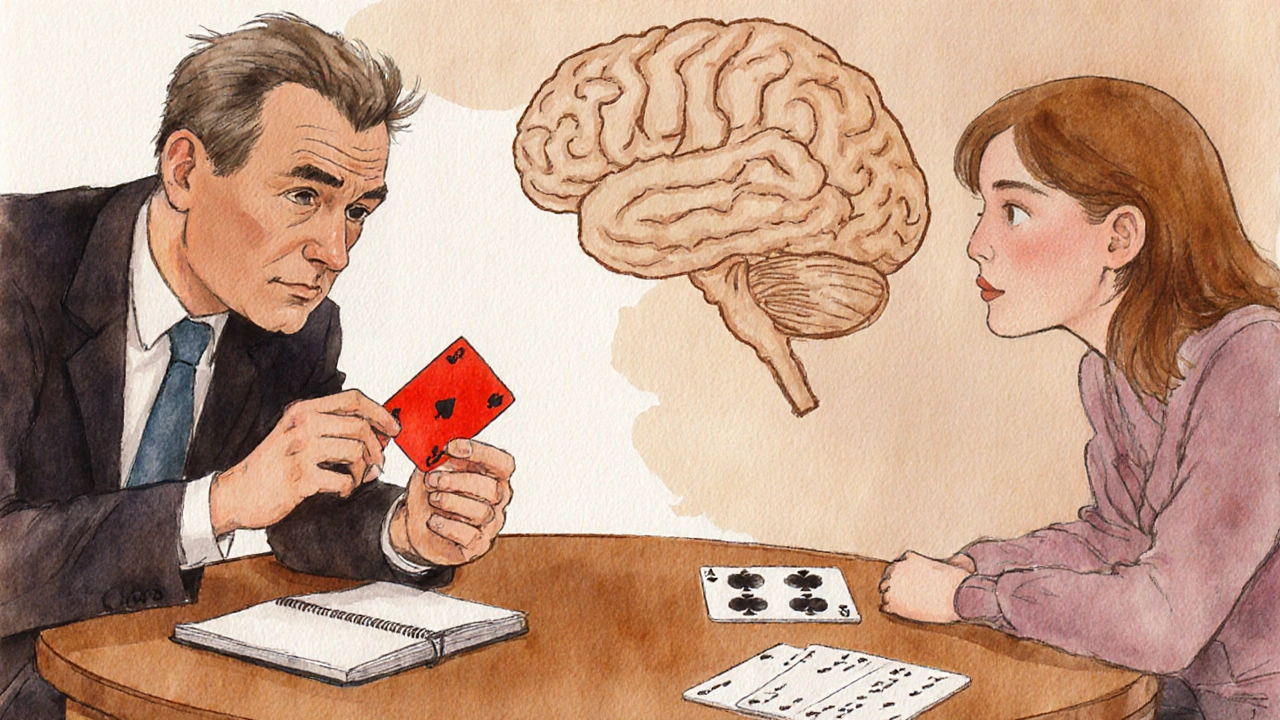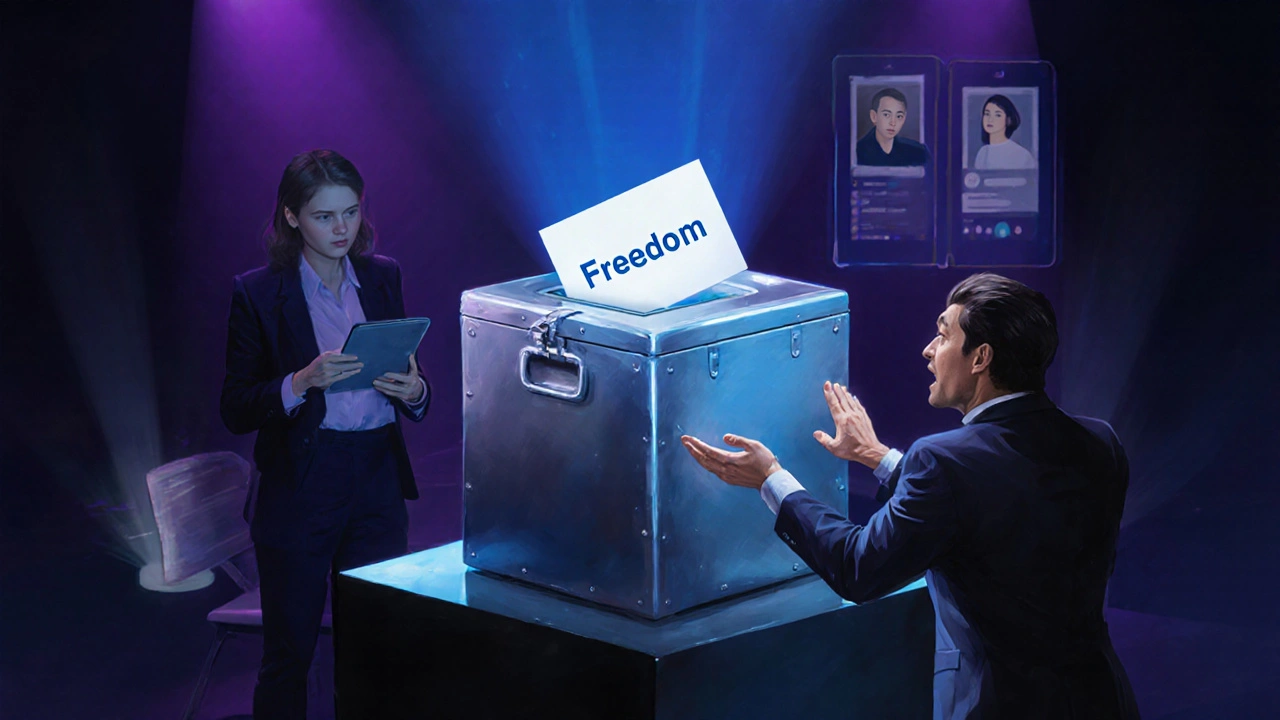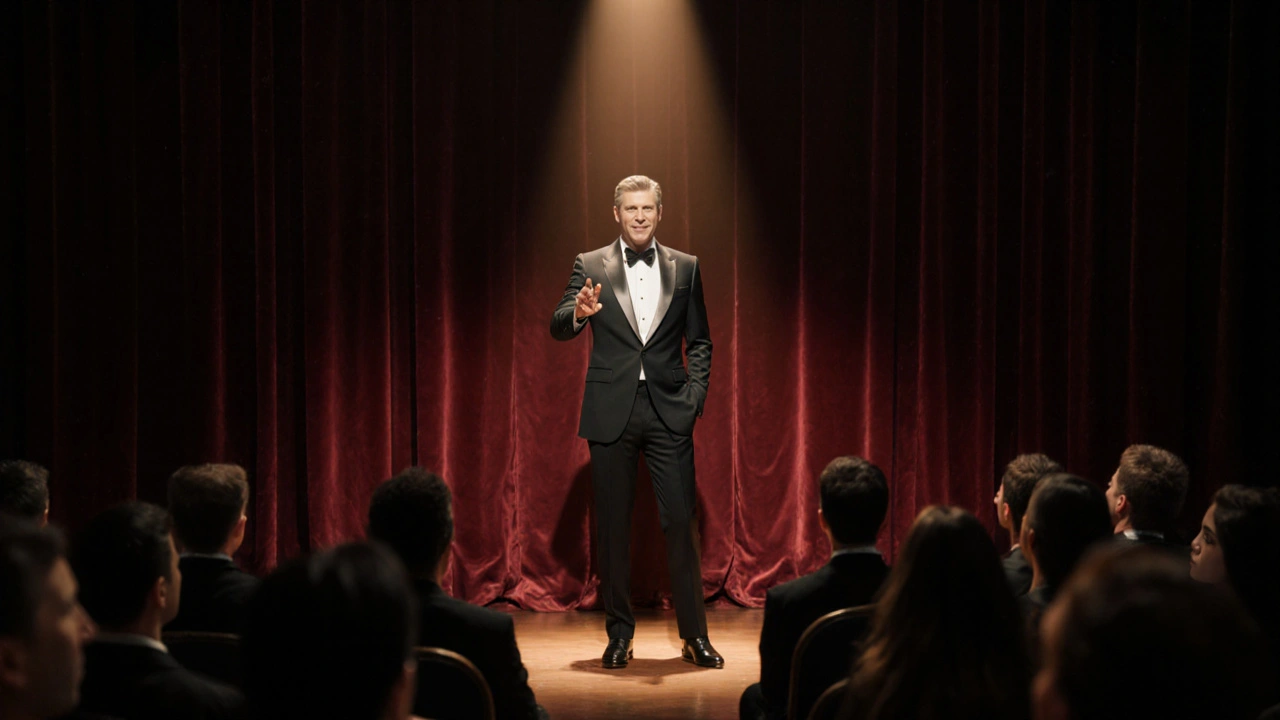Barnum Effect Demonstrator
How the Barnum Effect Works
The Barnum effect refers to people's tendency to accept vague personality descriptions as uniquely applicable to themselves, even though the description could apply to almost anyone. This psychological phenomenon explains why many people believe mentalists like Oz the Mentalist can read their minds.
Try it yourself:
You have a need to please others and are often willing to sacrifice your own interests for the sake of harmony.
You sometimes doubt your decisions, but you know deep down you're usually right.
You have a creative side that you rarely express openly.
You often feel that you're not living up to your potential.
You have strong opinions but prefer to keep them to yourself in most situations.
You sometimes act on impulse but later wonder if you made the right choice.
You are more successful in some areas of life than others, but you feel you have untapped potential.
You have a strong need for social approval.
You have a tendency to see both sides of any argument and appreciate complexity.
You have a strong desire for self-improvement but sometimes feel stuck.
Your Results
This is a psychological phenomenon called the Barnum effect. These statements are deliberately vague and designed to seem personal to almost everyone.
Research shows that people typically identify with 70-80% of these statements, even though they're actually generic.
This explains why mentalists like Oz the Mentalist can create the illusion of mind-reading. They use these types of statements to make the audience feel personally connected to the performance.
Key Takeaways
- Oz the Mentalist is a stage performer, not a genuine mind‑reader.
- His tricks rely on cold reading, suggestion, and well‑rehearsed routines.
- Understanding the psychology behind mentalism helps demystify his performances.
- Comparing Oz to other mentalists highlights common techniques and unique twists.
- Audience perception plays a huge role in believing the "real" aspect of mentalism.
When you hear the name Oz the Mentalist is a British mentalist famous for on‑stage mind‑reading and TV appearances, you probably picture a modern Sherlock Holmes who can guess your thoughts. The question buzzing around forums, YouTube comments, and magic‑enthusiast groups is: Is Oz the Mentalist real? In other words, does he possess genuine psychic powers, or is he simply a master of deception? Let’s peel back the curtain, examine the evidence, and see where the line between illusion and reality truly lies.
First, we need to define mentalism is a performing art that simulates extraordinary mental abilities such as telepathy, clairvoyance, or precognition. Mentalism isn’t magic in the traditional sense of pulling a rabbit from a hat; it leans heavily on psychology, suggestion, and the audience’s willingness to be amazed. Think of it as the art of making the impossible feel plausible.
Oz’s Background: From Small‑Town Stages to Prime‑Time TV
Born Oliver Zachary in 1985, Oz grew up in a modest town in England. He discovered magic at age nine, inspired by a televised tutorial on close‑up tricks. By his late teens, he was performing at local clubs, blending traditional sleight‑of‑hand with psychological experiments he read about in books by Derren Brown and Banachek.
His breakthrough came in 2014 when he landed a spot on the British talent show "Britain's Got Talent." A three‑minute routine where he guessed the exact birthday, favorite color, and first pet of five random audience members went viral, racking up millions of views. Since then, Oz has toured internationally, released a Netflix special, and authored a bestseller titled "The Mind’s Mirror."
What Makes Oz Appear "Real"?
The perception of authenticity hinges on three core techniques that Oz, like most mentalists, employs daily:
- Cold Reading. This is the art of making high‑probability statements and then refining them based on the subject’s reactions. For example, saying "You have a scar you hide from strangers" will resonate with many people, and the performer can quickly adjust the narrative.
- Suggestion and Priming. Subtle cues-like the placement of a red object or a specific word choice-can steer a participant’s thoughts without them realizing.
- Pre‑Show Work. Often, assistants gather information before the show (social media, brief conversations, or even “ticket check” questions). This background data fuels seemingly impossible guesses.
Oz openly acknowledges using these tools in interviews, but he frames them as "techniques" rather than "tricks," which adds an aura of mystery.
Analyzing a Signature Routine
Let’s break down one of Oz’s most famous pieces, the "Locked Box Prediction." The routine goes like this:
- Oz presents a sealed metal box onstage, claiming it contains a prediction of a word a spectator will think of.
- A volunteer is handed a stack of 20 random words. They are instructed to pick any three, combine them, and think of a new word that represents the combined meaning.
- After a series of “mental exercises,” the volunteer announces their word-"Freedom"-and Oz opens the box to reveal a printed card with the exact same word.
Here’s the likely method:
- Before the show, an assistant writes a list of common three‑word combos that lead to a predictable outcome (e.g., "Bird," "Sky," "Open" → "Freedom").
- Oz subtly guides the volunteer toward those three words using suggestion (color of cards, phrasing). The volunteer feels they have free choice.
- The prediction inside the box is a pre‑written slip that matches the anticipated outcome. If the volunteer deviates, Oz has a backup card that says something like "Your mind is too wild for this trick," which still feels like a win.
Every step is rehearsed, yet the audience sees only the final astonishment.

Psychology Behind the Illusion
Human cognition is wired to seek patterns and fill gaps. When Oz makes a vague statement, our brains automatically attach personal details, making the statement feel tailor‑made. This is called the Barnum effect, the same reason horoscopes seem accurate.
Additionally, the social proof principle amplifies belief. If a few audience members react with amazement, others are more likely to accept the feat as genuine. Oz expertly stages reactions-known volunteers clap loudly, and the lighting focuses on them, creating a cascade of validation.
Comparison with Other Renowned Mentalists
| Aspect | Oz the Mentalist | Derren Brown | The Amazing Kreskin |
|---|---|---|---|
| Real Name | Oliver Zachary | Jeremy Derren Brown | George Joseph Kresge |
| Primary Era | 2010s‑Present | 1990s‑Present | 1960s‑Present |
| Signature Technique | Cold reading + pre‑show intel | Psychological suggestion + anchoring | Memory feats + rapid calculation |
| TV Presence | Netflix special, BBC appearances | Channel 4 specials, "The Secret" series | PBS documentaries, "Kreskin the Mind Reader" |
| Audience Interaction Style | High energy, rapid‑fire choices | Calm, methodical, narrative‑driven | Direct questioning, classic guessing game |
Notice the recurring theme: all three rely on psychological tricks rather than supernatural powers. Oz’s edge is his fast‑paced, media‑savvy presentation that feels fresher to younger audiences.
Why the Debate Persists
Even after decades of exposure, the "real" question lingers because:
- Information Gaps. Not everyone watches behind‑the‑scenes documentaries that explain the methods.
- Emotional Impact. Experiencing a mind‑reading moment creates a strong emotional imprint, which biases memory toward believing it’s genuine.
- Marketing Language. Promotional materials often use phrases like "actual mind‑reading" or "real predictions," purposefully blurring lines for hype.
When you combine these factors, it’s easy to see why some fans cling to the idea that Oz possesses real psychic abilities.

How to Spot the Trick Yourself
If you attend an Oz the Mentalist show, keep these tips in mind to see through the illusion:
- Watch for repeated phrasing. Mentalists often use the same script for cold reading statements.
- Notice any assistants gathering information before the show-ticket takers, pre‑show questionnaires, or social media scans.
- Pay attention to the audience’s reaction timing. A sudden applause often signals a pre‑planned cue.
- Ask follow‑up questions after the show. Mentalists rarely provide detailed explanations, but they might reveal a hint if pressed politely.
Understanding these clues doesn’t ruin the fun; it just adds a layer of appreciation for the craft.
Conclusion: The Magic Is Real, Not the Mind‑Reading
So, is Oz the Mentalist real? The short answer: Oz is a real performer, but the "mind‑reading" is an expertly crafted illusion, not supernatural. The real magic lies in his ability to read people, use suggestion, and create an unforgettable experience. By knowing the psychology behind his tricks, you can enjoy the show while staying grounded in reality.
Frequently Asked Questions
Does Oz the Mentalist claim to have psychic powers?
Oz never outright claims to be psychic; he usually describes his work as "mentalism" or "psychological entertainment," leaving the interpretation up to the audience.
What is the difference between magic and mentalism?
Magic focuses on visual tricks like vanishing objects, while mentalism centers on hidden mental feats such as telepathy, prediction, and influence.
Can anyone learn Oz's techniques?
Yes. Books on cold reading, suggestion, and stage psychology teach the same fundamentals Oz uses, though mastering them takes years of practice.
Is there any scientific evidence supporting mentalism?
Scientific studies show that techniques like suggestion and the Barnum effect reliably influence perception, but no evidence confirms actual telepathy or precognition.
Why do some people still believe Oz is genuine?
Belief is fueled by emotional impact, limited exposure to the method, and marketing language that hints at authenticity.
What are the ethical concerns with mentalism?
Performers must avoid exploiting vulnerable audiences, especially when dealing with personal topics like grief or health. Transparency after the show helps mitigate misuse.
How does Oz prepare for a new show?
He researches venue demographics, rehearses scripts, and coordinates with assistants who gather pre‑show intel. He also updates his routine to incorporate current events for relevance.
Can mentalism be used outside entertainment?
Yes. Sales, negotiation, and therapy sometimes borrow mentalism principles-like building rapport and influencing decisions-but ethical guidelines differ.


Rajashree Iyer
October 13, 2025 AT 15:19When we peer behind the velvet curtain of Oz the Mentalist's dazzling stage, we are not merely witnessing tricks; we are confronting the age‑old paradox of perception versus reality. The mind, that fickle theatre, craves narratives that elevate the ordinary to the extraordinary, and Oz supplies exactly that alchemical formula. He does not conjure telepathy from thin air; he harnesses the human tendency to fill gaps with meaning, the very essence of the Barnum effect. Each cold reading is a mirror held up to the audience, reflecting back what they already believe about themselves. The suggestion woven into his patter acts like a subtle scent, guiding thoughts without the spectator ever realizing the source. Pre‑show intelligence gathers fragments of lives, stitching them into a tapestry that appears spontaneously birthed on stage. The locked box prediction is not a prophecy but a rehearsal of inevitability, rehearsed until the moment feels inevitable. In this dance, the performer is both magician and psychologist, a duality that blurs the line between art and science. The audience’s applause is not a measure of supernatural power but a social confirmation that the illusion has resonated. One might argue that the very belief in the impossible is the real magic, a collective unconscious that Oz skillfully taps into. Yet, when the lights dim and the curtain falls, the mentalist returns to the mundane world, reminding us that the extraordinary is a crafted narrative. The question, therefore, is not whether Oz possesses psychic abilities, but whether we allow ourselves to be enchanted by the story he tells. This distinction, though subtle, is crucial; it protects us from mistaking clever psychology for genuine paranormal phenomena. It also honors the craft, recognizing the thousands of hours of study, rehearsal, and psychological insight that underpin each performance. As we walk away, the lingering sense of wonder is a testament to his mastery, not a validation of mystic powers. In the end, the truth is simple: the magic is real; the mind‑reading is an artful illusion.
Parth Haz
November 2, 2025 AT 03:39Excellent overview! It’s impressive how Oz blends psychology with showmanship, creating an experience that feels both mysterious and entertaining. Understanding the mechanics behind his acts only deepens the appreciation for his skill. Keep exploring these insights, and you’ll enjoy his performances even more.
Vishal Bharadwaj
November 21, 2025 AT 16:59i think the article oversimplifys everything. it pretends that all mentalists use the same exact scripts, which is just not true. also, the "pre‑show intel" claim is overhyped – most of the stuff is pure guesswork, not some elaborate espionage.
anoushka singh
December 11, 2025 AT 06:19Nice summary, but I still feel something's missing.